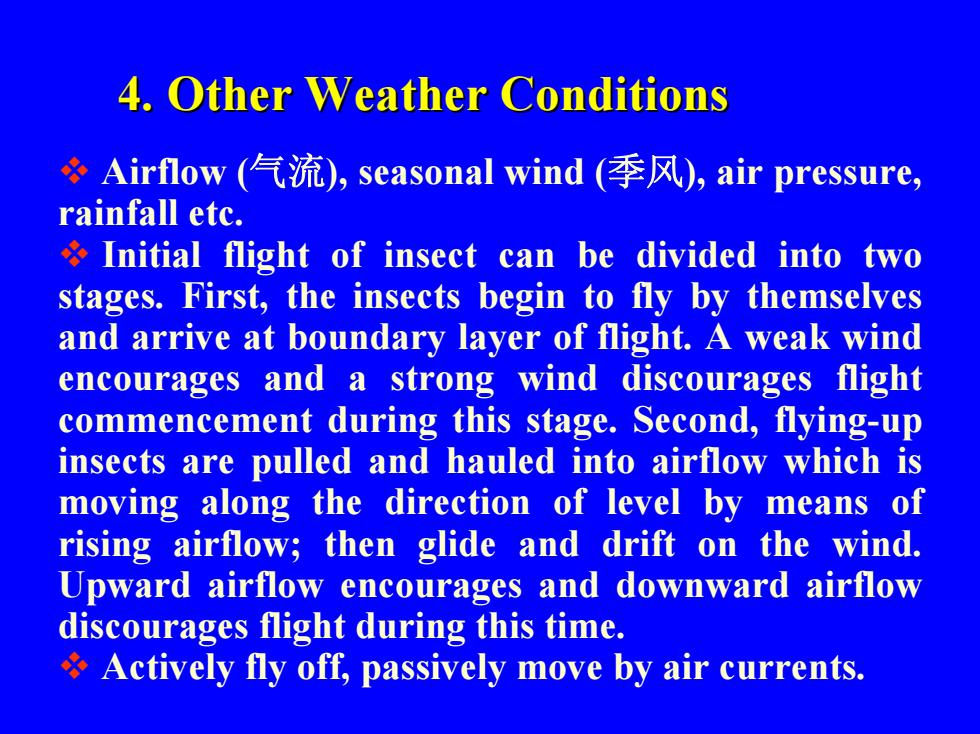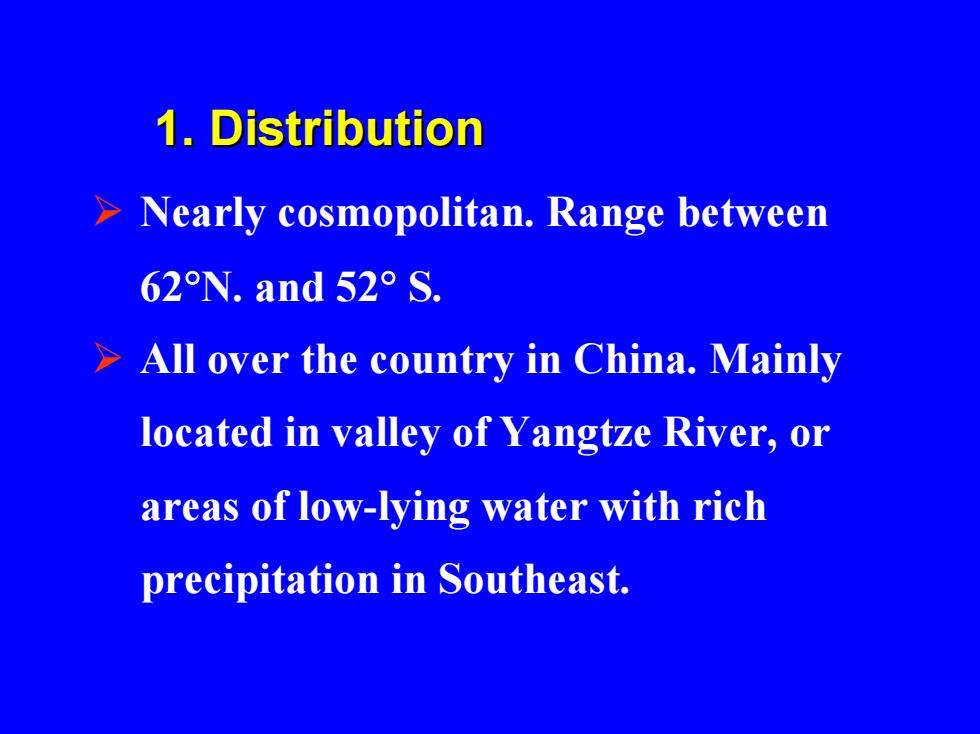
3.Humidity Affects flying-off frequency Affects population
Affects flying-off frequency Affects population 3. Humidity Humidity

4.Other Weather Conditions Airflow(气流),seasonal wind(季风),air pressure,. rainfall etc. Initial flight of insect can be divided into two stages.First,the insects begin to fly by themselves and arrive at boundary layer of flight.A weak wind encourages and a strong wind discourages flight commencement during this stage.Second,flying-up insects are pulled and hauled into airflow which is moving along the direction of level by means of rising airflow;then glide and drift on the wind. Upward airflow encourages and downward airflow discourages flight during this time. Actively fly off,passively move by air currents
Airflow (气流), seasonal wind (季风), air pressure, rainfall etc. Initial flight of insect can be divided into two stages. First, the insects begin to fly by themselves and arrive at boundary layer of flight. A weak wind encourages and a strong wind discourages flight commencement during this stage. Second, flying-up insects are pulled and hauled into airflow which is moving along the direction of level by means of rising airflow; then glide and drift on the wind. Upward airflow encourages and downward airflow discourages flight during this time. Actively fly off, passively move by air currents. 4. Other Weather Conditions Other Weather Conditions

Black cutworm Black cutworm Agrotis ypsilon also called地蚕、 土蚕、切根虫、夜盗虫。 Lepidoptera,Noctuidae. Typical migratory pest
Black cutworm Black cutworm ¾ Black cutworm Agrotis ypsilon also called 地蚕、 土蚕、切根虫、夜盗虫. ¾ Lepidoptera, Noctuidae. ¾ Typical migratory pest

1.Distribution Nearly cosmopolitan.Range between 62N.and52°S. >All over the country in China.Mainly located in valley of Yangtze River,or areas of low-lying water with rich precipitation in Southeast
¾ Nearly cosmopolitan. Range between 62°N. and 52° S. ¾ All over the country in China. Mainly located in valley of Yangtze River, or areas of low-lying water with rich precipitation in Southeast. 1. Distribution 1. Distribution

2.Damage 106 host plants recorded, include most crops, fruit trees, vegetables and other seedlings of trees, flowers and weeds. #Feed on young leaves during 1th and 2nd instars larvae.Cutting off the stem and sometimes dragging the plants into their burrows after third instar larvae. Do great damage in newly planted fields
106 host plants recorded, include most crops, fruit trees, vegetables and other seedlings of trees, flowers and weeds. Feed on young leaves during 1th and 2nd instars larvae. Cutting off the stem and sometimes dragging the plants into their burrows after third instar larvae. Do great damage in newly planted fields. 2. Damage 2. Damage